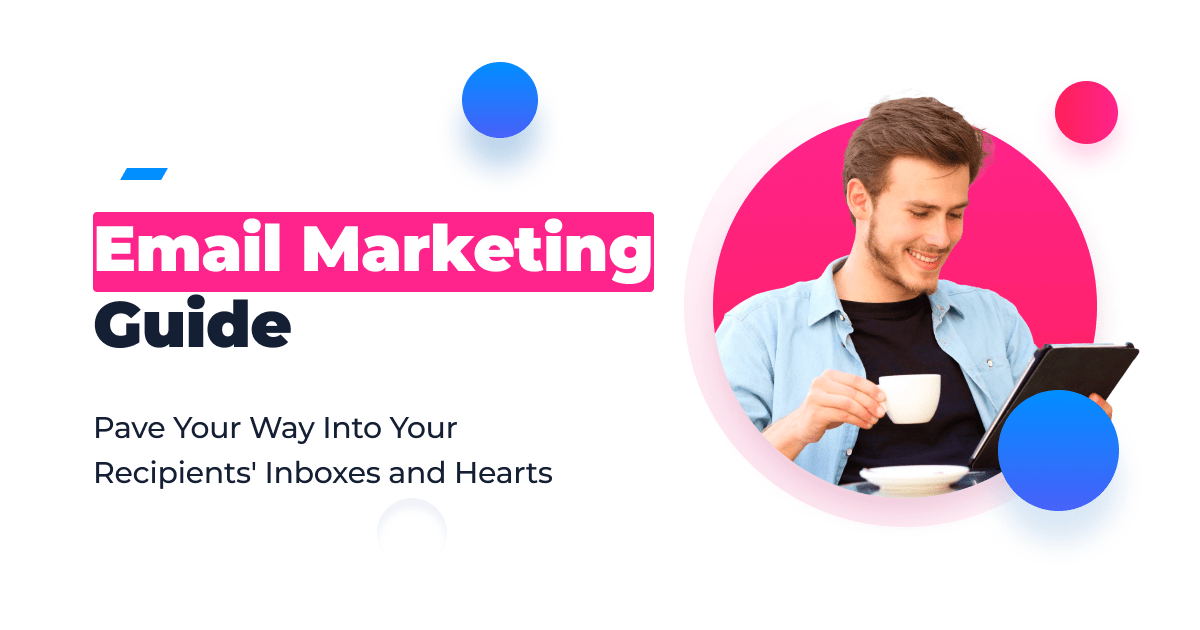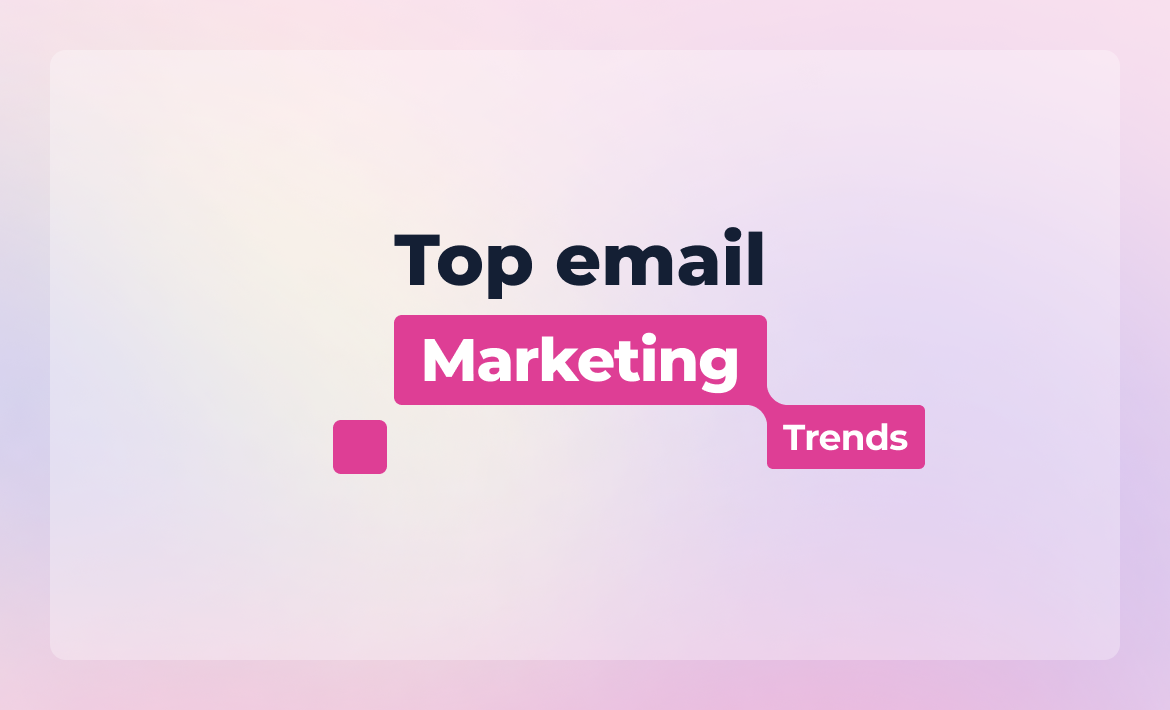Here are top email marketing trends to keep an eye on in 2025.
"The global e-mail marketing market was valued at $7.5 billion in 2020 and is projected to increase to $17.9 billion by 2027." At least, that's what Statista says.
Want to get successful in your industry? Adopt the newest email marketing trends, and success is bound to come your way. After all, being a progressive business on the cusp of industry trends always pays off when it comes to attracting customers.
Ready to learn what’s hot and what’s not for the email marketing future in 2025? Keep reading!
#1: Email marketing automation
Email marketing automation ensures consistent and cohesive communication between subscribers and brand.
Take a drip campaign, for example. Instead of bombarding users with everything all at once, each email is triggered by specific actions, making the communication feel way more personal and friendly. And hey, since information comes in bite-sized “drips,” no one’s stuck reading a mountain of text.
Here is how you can optimize your marketing efforts:
- Make use of email templates.
- Automate mailing list scrubbing.
- Send automated transactional emails to your customers.
- Automate the onboarding process with a series of email drips.
- Automate email lead nurturing.
Pro Tip ⚙️ 📈: All of these are rightly related to other email marketing industry trends, such as email marketing gamification. Gamified solutions offer a competitive advantage by standing out among the rest of the emails in the subscriber’s inbox. Still, it’s nothing complicated. For instance, why not create a simple holiday quiz in a free web form generating tool?
#2: Ultra-personalization
Regardless of email marketing latest trends, the end goal of any email marketing campaign is to generate more revenue. Over the last couple of years, marketers have concluded one of the best ways to do so is through complete personalization of user experience.
Let’s face it — in today’s world of content overload, the last thing a person wants to see in their inbox is yet another useless email, irrelevant to their hobbies and needs. 😤
Now let the statistics speak 🔢💬.
- 88% of your customers check email every day
- 408.2 billion emails will be sent every day by 2027
- On average, customers spend between 2 and 8 seconds on reading your email
- Tuesday is the favorite day for your customers to receive an email (35% of the respondents think so)
- 48% of your customers would gladly give their email address to receive a discount
- 79% of millennials and 57% of Gen Z members like being contacted by email
Lack of email marketing campaign personalization can result in anything from mailing list degradation to an overall failure of the email marketing campaign because of its skyrocketing costs.
This trend is particularly hot, and the importance of personalisation strengthens every day. That’s why the business world is expected to focus on hyper-personalization as one of the top e-mail marketing trends in 2025, as opposed to just personalizing parts of campaigns.
Pro Tip 📧✨: To embrace 2025 email marketing trends, make personalization a key part of your strategy.
- Tailor messages and promotions by audience segment.
- Recommend products or content by audience segment.
- Send triggered emails based on visitor behaviour.
- Recommended products or content per individual.
#3: Artificial intelligence
Despite the widespread AI adoption as one of the latest email marketing trends, up to 60% of marketers feel threatened by AI. But you need to remember that AI isn’t meant to replace you, it’s meant to optimize your workload and help you scale your email marketing efforts.
- AI helps to write subject lines.
- AI allows you to send personalised emails to each prospect.
- AI restructures your email campaigns to maximum effectiveness.
- AI cleans up email lists.
- AI helps to build mailing lists.
#4: Interactive emails
Interactivity has already been around for a while among all those latest trends in email marketing but is only going to grow stronger in 2025. You’d wonder, ‘Why” 🤔 Because interactive responsive emails are the holy grail of email marketing. They boost customer engagement and increase email interaction. Some specific interactive email elements are expected to sizzle in 2025…
- Animated buttons and CTAs
- Rollover effects to showcase product offering
- Interactive image and product carousels, controlled by the user
- Accordion features designed to make long-form emails more compact
- Surveys, polls and user-generated interactive content

#5: Mobile-first
Let’s face it: we're living in a mobile-dominated world. While marketers, designers, and copywriters might be crafting those perfect emails from their spacious desktop screens, people open a whopping 68% of email campaigns on mobile devices.
It's not just about keeping up with the times; it's about understanding where your audience is. And if your emails aren’t cutting it on mobile, you're not just missing out on clicks; you're missing out on potential business. Sounds like gloomy email marketing predictions, right?
It's not just about keeping up with the times; it's about understanding where your audience is. And if your emails aren’t cutting it on mobile, you're not just missing out on clicks; you're missing out on potential business. Sounds like gloomy email marketing predictions, right?
✍️📱 How to craft copy that works on mobile :
- Don’t write novels. Keep your texts crisp, clear, and compelling. Think bullet points, not essays.
- On mobile, you've got 25-30 characters to make an impression in the subject line. Make them count.
🎨📱 How to design with mobile in mind:
- Not all phones load images by default. Design with a no-image scenario in mind. Your message should still come across.
- Position your CTAs in the middle of the screen. And remember, fingers aren't as precise as mouse pointers. Size matters.
- Space things out. Avoid link clusters. Make it easy for your readers to tap the right link.
Optimizing for mobile isn't just one of the email marketing best practices for 2025, it's a necessity. It's about meeting your audience where they are and delivering value every single time they click ‘Open’. So, the next time you draft that perfect email, remember: ‘Think mobile-first.’
#6: Sustainable email marketing
Email marketing is paperless. It’s a digital substitute for traditional mail that saves a ton of trees. However, as we progress into the digital age, it is critical to recognise that emails are paperless but not entirely green, 😯 Why? Because every email sent uses energy to be delivered.
Now imagine how many emails companies send every day — millions! That’s why sustainability will be one of the top trends in email marketing in 2025.But there is a silver lining: following this particular email marketing trend not only benefits the environment but can also bring you more leads.
Pro Tip 💡🌍: Here are some latest email marketing tips that can make your daily campaigns more sustainable:
- Use a free email checker to update and clean your email lists regularly. Ensure that you are only reaching out to engaged subscribers. This lowers the energy lost on unopened emails and increases your open rates.
- Optimize. The greater the size of the email, the more energy it consumes. Make images weigh less, simplify code, and ensure your emails are as light as possible without sacrificing quality.
- Tailor your emails to specific audience segments to ensure relevance and lower the number of emails ignored or deleted. This not only saves energy but also leads to higher user engagement.
- Make sure each email has a purpose — go over your automated email sequences and review them. Redundant emails not only annoy subscribers but waste energy.
In the grand scheme of things, sustainable email marketing trends and best practices might seem like a drop in the ocean. However, every effort counts. Just as recycling can make a significant positive impact over the decades, current practices for a sustainable future of email marketing can collectively make a difference. Plus, a sustainable approach often aligns with effective marketing strategies, making it a win-win for businesses and the planet alike.
Lastly, use a DKIM record checker to ensure your emails are properly authenticated, enhancing deliverability and security while maintaining the integrity of your sustainable email marketing efforts.
#7: Focus on privacy
Less of a trend, more of a legal obligation. Focus on data privacy and data protection are going to be huge in email marketing in 2025.
Back in 2018, the launch of the General Data Protection Regulation (GDPR) redefined the email marketing world, outlining the new rules of cold emailing and mailing list building.
Even with these regulations in place, 92% of customers still say they don't trust companies with the safety of their data.
Pro Tip: 🛡️📧 To improve data privacy, provide subscribers with an option to unsubscribe or change their emailing preferences. Let them decide what content they will receive from you and when.
For instance, you can ask leads to fill out a short questionnaire (either on a landing page or Welcome email) to specify their preferred content and mailing frequency. Don’t pressure them to decide on the spot, though. Instead, link them to the preference control centre in every email so that they can change whenever they want.
And here is what you get with this tip:
- More data to segment your subscriber database.
- Clean mailing list when every uninterested subscriber can easily unsubscribe.
- Improved email marketing performance; recipients get what they expect.
#8: Email content accessibility
Does email marketing work in 2025? Yes, it does, but only if your content is accessible.
Accessibility is all about making your content easy to read for everyone. Because being able to read the emails without having to use assistance is not a luxury provided to everyone.
Consider this: approximately 15% of people live with some form of disability, and for these people, accessible content is a necessity. Out of them, a quarter are visually impaired and might rely on screen readers to access web content. These tools use page elements to navigate and read out content.
But the benefits of accessibility go beyond helping those with disabilities. It’s also a powerful driver in improving your emails and optimising for your general audience.
Accessible content is inherently more structured, easier to read, and more user-friendly for everyone. Good accessibility translates to excellent usability, which is fantastic for business.
Pro Tip 📝 👩💻: Here’s how to make your content more accessible:
- Make your subject line concise yet descriptive, giving readers a clear idea of the email's content.
- Ensure your content follows a logical order, especially when viewed on different devices. This is crucial for those using screen readers.
- Use headers, like H1 and H2. They help individuals using screen readers understand the content's hierarchy, allowing them to navigate your content efficiently.
- Good colour contrast isn't just aesthetically pleasing; it's vital for those with colour blindness. Aim for one text colour against a contrasting background colour.
- Ensure the most essential data isn't only in images or infographics. Complement images with descriptive text and provide transcripts for video content.
- Instead of generic "Click here" links, provide context. For instance, "Click to explore our holiday collection" offers clarity on what the link leads to.
Final thoughts
From our email marketing trend analysis, we can already say that 2025 is about to be a challenging, but interesting year. There are a lot of brand new trends in email marketing emerging and older ones still in full force. Anyway, it’s up to you whether you’re going to take advantage of them and slay the competition 😉
Here’s to 2025! 🥂
Table of Contents
Crack the sales formula with CRM Lab
Twice a month, receive actionable CRM content to your inbox.



